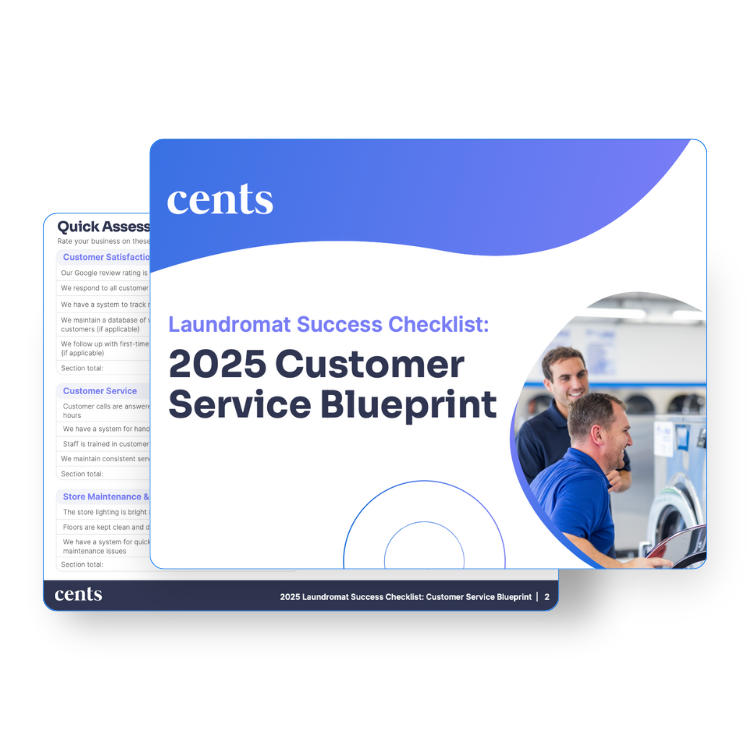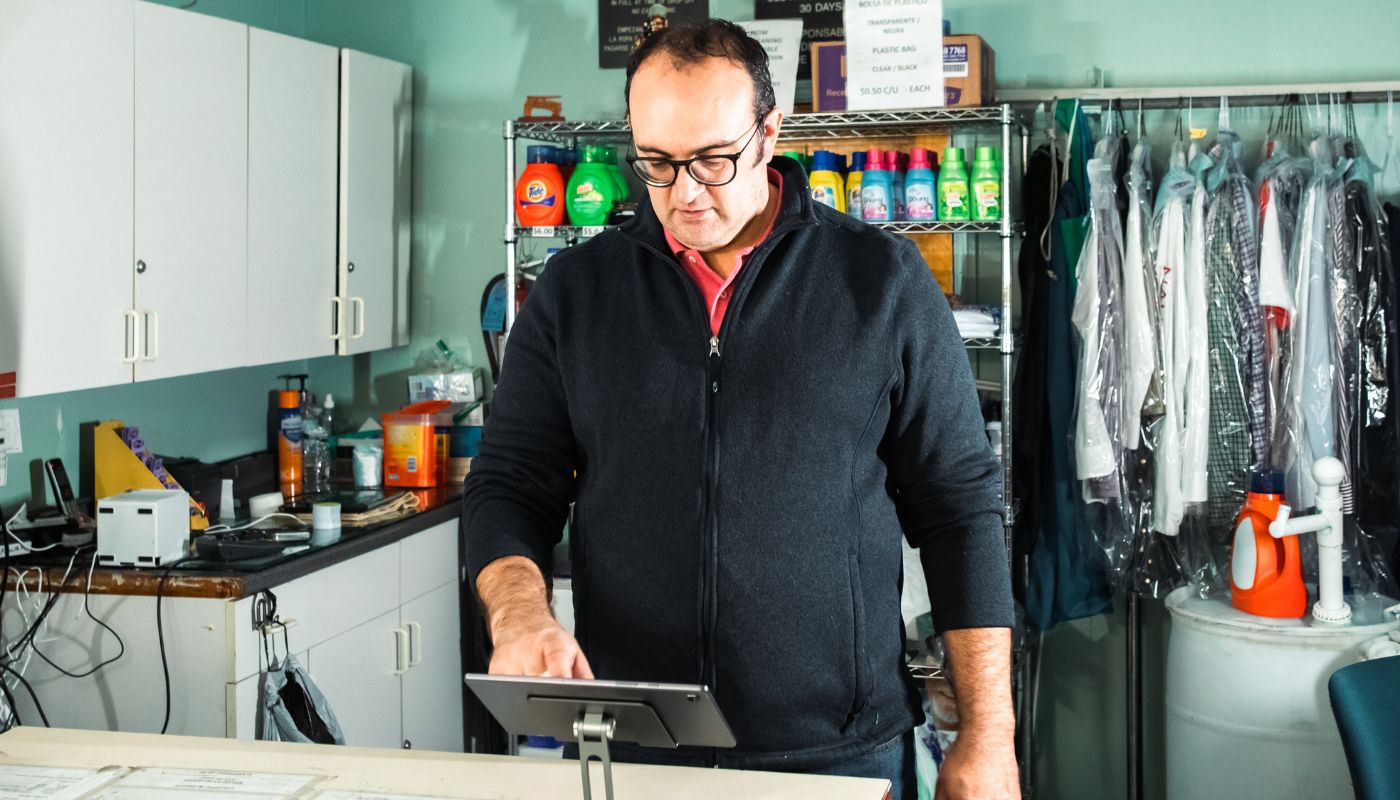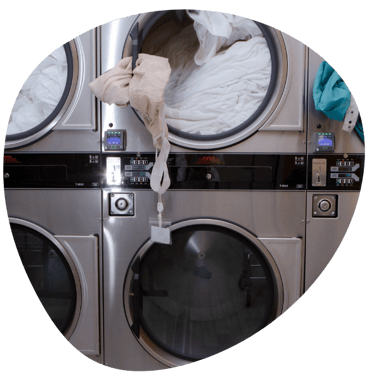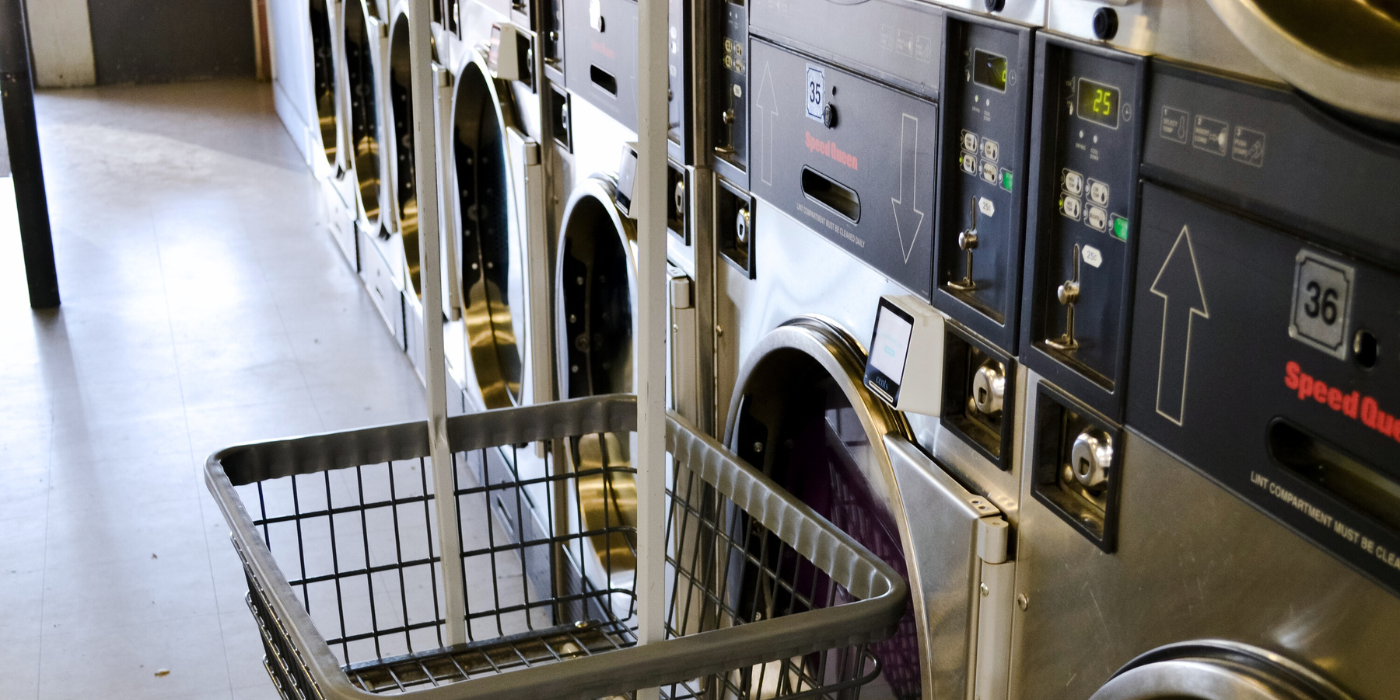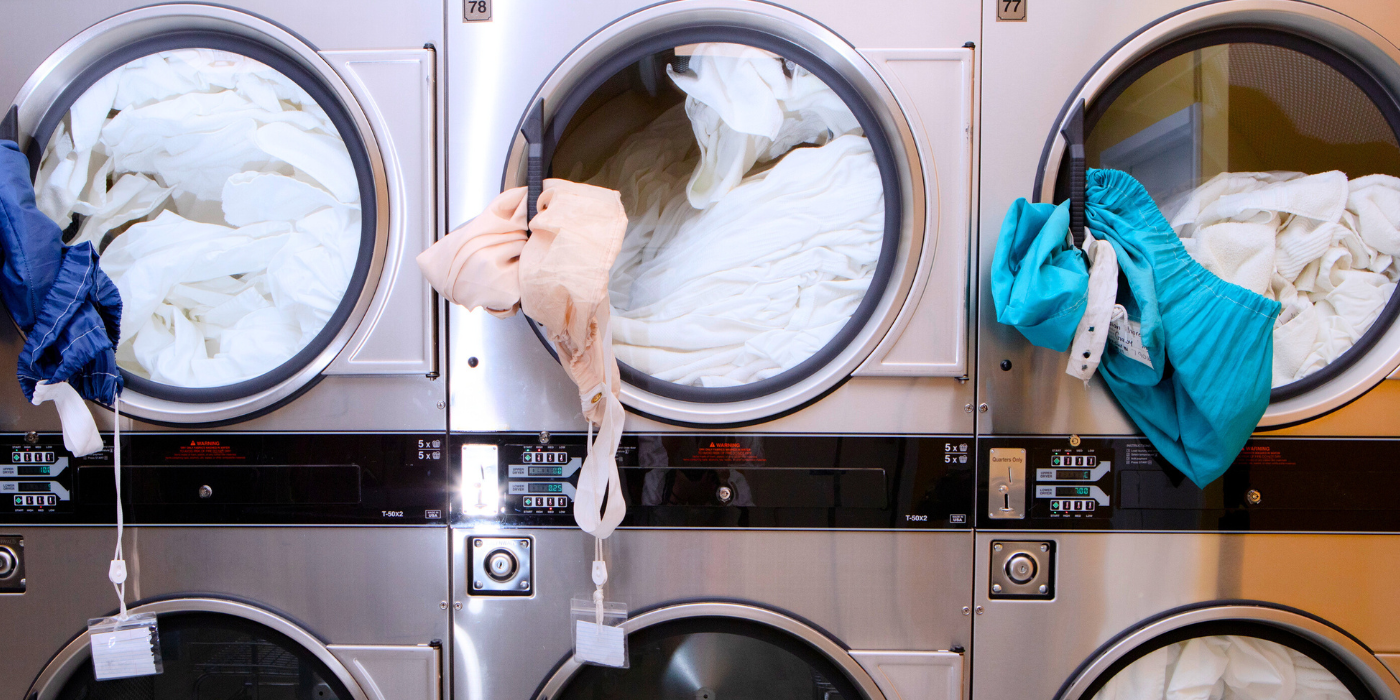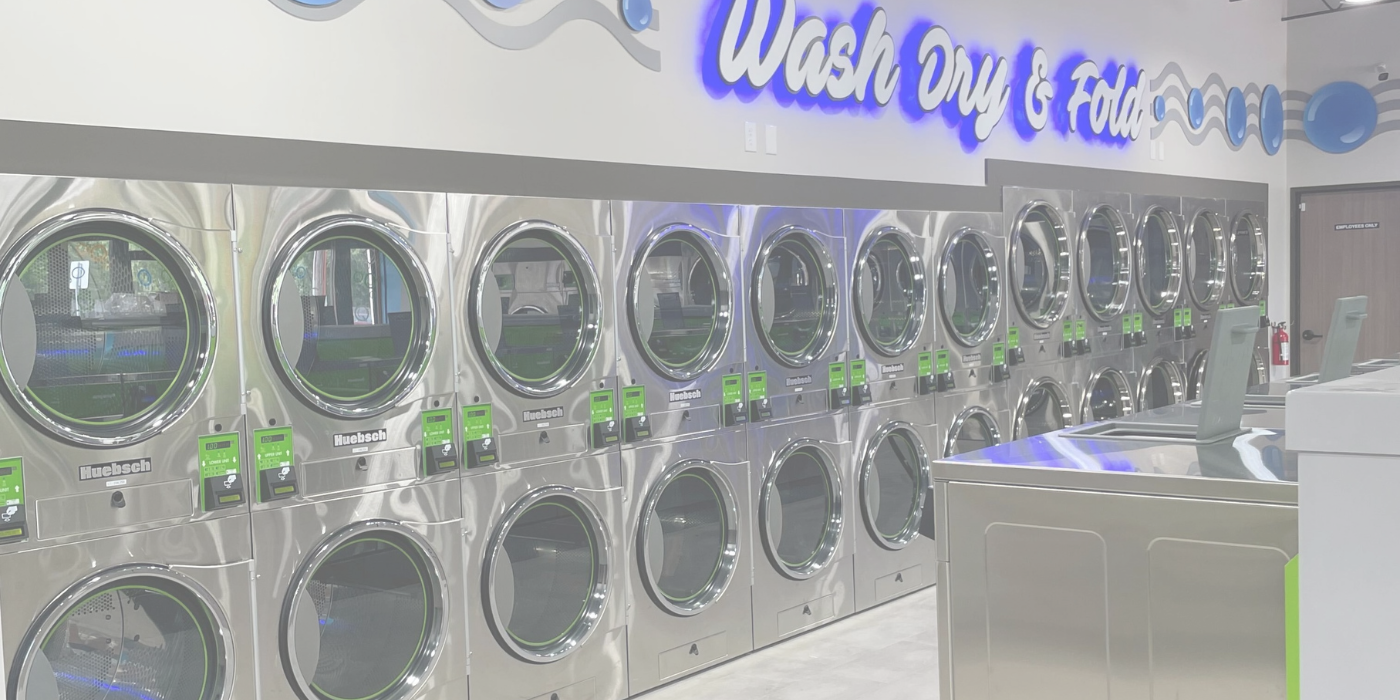Understanding commercial laundry machines
Understanding the different types of laundry equipment can help you take better care of your machines and help drive smart and informed purchasing decisions. Here's a high-level overview of the types of equipment you should have in your laundromat:
Commercial laundry machines are heavy-duty appliances designed for high-capacity, continuous use in commercial laundromats. There are three main types of commercial laundry machines:
-
Commercial washing machines: These machines are designed to clean large loads of laundry. They come in various sizes to suit a range of business needs.
-
Commercial dryers: Commercial dryers are built to efficiently dry large quantities of laundry, ensuring quick turnaround times.
-
Irons and presses: Specialized equipment for ironing and pressing linens and fabrics, which play an important role in laundromats that offer added services like pickup and delivery and wash-and-fold.
How Long Do Commercial Laundry Machines Last?
Laundry machines aren't a one-time purchase. As nice as that would be, each one needs replacing at some point. Having a handle on the lifespans of your commercial washers and dryers can help you plan for the future and avoid any negative effects on your business and customers. So, you may be wondering, ‘how long do my commercial laundry machines last?’. Here’s your answer:
Average lifespan of commercial laundry machines
The average lifespan of commercial laundry machines typically is 10-20 years. This duration can vary based on factors like brand quality, frequency of usage, and maintenance practices. Regular upkeep and careful usage are key to maximizing the longevity of these machines.
Lifespan of Commercial Laundry Machines
On average, commercial washers have a lifespan of approximately 10 to 15 years. With regular maintenance and lower frequency of use, this can extend to 20 years or more. The longevity of commercial washers is influenced by several factors, including the frequency of use, water quality, machine size, and adherence to recommended usage.
Lifespan of commercial dryers
Commercial dryers usually last longer than washers, with an average lifespan of around 15 to 20 years. Factors affecting their lifespan include the frequency of use, proper venting and lint removal, machine size, and regular maintenance of components like belts and motors.
Lifespan of irons and presses
These specialized machines, used for ironing and pressing linens and other fabrics, typically have a lifespan similar to dryers, often lasting 15 to 20 years, especially if they're well-maintained and used according to manufacturer guidelines.
While the average lifespan of commercial laundry machines typically ranges from 10 to 20 years, the exact duration depends heavily on the type of machine, brand quality, usage practices, and the level of care and maintenance it receives.
Read more: Guide to Laundry Equipment Maintenance for Commercial Laundromats
Factors that Affect Commercial Laundry Machine Longevity
There are a few factors that determine the longevity of your laundry equipment. Keep reading to learn how you can maximize lifespan, reduce downtime, and save money in the long run:
-
Level of usage
The more frequently a machine is used, the shorter its lifespan is likely to be. If you're shopping around for laundry equipment, do so with a projected level of usage in mind and make sure to choose equipment that is designed for the volume of customers your laundromat generates. Rule of thumb: always go with the machine that matches your specific needs, even if it may mean taking on a little extra upfront costs. You'll thank yourself down the road!
-
Quality and type of machine
High-quality machines from established, reputable manufacturers will deliver more consistent, predictable service and a longer lifespan compared to lower-quality, less expensive models. Brands known for durability and reliability may cost more but offer better long-term value. Don't skimp on the heartbeat of your business!
-
Care and maintenance
Adhering to regular maintenance schedules is a surefire way to increase the longevity of your laundry machines. Professional servicing, cleaning, and prompt repair of any issues are major factors in extending the lifespan of your machines. Keep in mind, equipment maintenance is not an outlet for your DIY sensibilities. Get it done right and protect your profits!
-
Environmental factors
The environment in which the machine is used can also affect its lifespan. Harsh conditions, such as high humidity, hard water, or exposure to chemicals, can accelerate wear and tear. While some of these environmental factors are out of your control, water quality and chemical exposures rest squarely on your shoulders. If you live in an area with particularly hard water, have a filter installed. Not only will this protect your machines, but it allows you to take better care of your customers. Chemical exposure should also be avoided through responsible business practices.
-
Technological advancements
As technology advances, newer machines may offer improved efficiency and features that make them a better investment. You can also add hardware to existing machines that tracks their overall health, reminds you of maintenance schedules, and tracks user behavior that gives you insights into how to better care for your customers and business. Keeping machine-care on par with technological advancements is a smart strategy for laundromat owners who take their growth seriously.
Comparing Lifespans of Different Commercial Laundry Machine Types
As you now know, different types of commercial laundry machines have varying lifespans. For example, dryers tend to outlast washers, and specialized equipment like ironing machines can have an even longer lifespan. When planning for equipment replacement, remember these differences to consider how long the machines will last.
When to Upgrade Your Commercial Laundry Machines
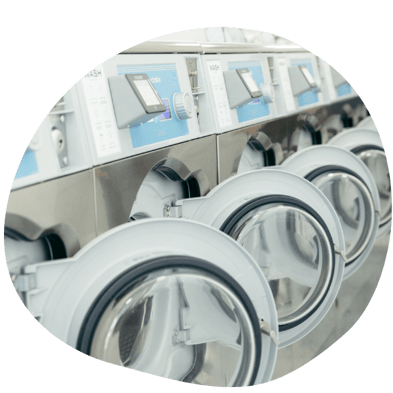
Regular equipment maintenance can take you far, but it's also important to know when it's time to retool. Here are ways you can determine the right time to upgrade your commercial laundry equipment:
Identifying wear and tear
Keep a close eye on your machines and be vigilant when searching for signs of wear and tear. While this should be considered a daily to-do, you should also create biweekly or monthly calendar reminders to do a thorough check of all your equipment. Frequent breakdowns and costly repairs may come as a sign that it's time to consider an upgrade.
Tips for maintaining commercial laundry machines
Regular maintenance is key to extending the lifespan of your equipment. But that's just the tip of the iceberg. Here are all the tried and true tips for extending the lifespan of your laundry machines:
-
Regular cleaning: Implement a routine cleaning schedule for your commercial laundry machines. This includes cleaning the interior drum, lint traps, and any other accessible parts. Removing built-up grime and lint helps maintain optimal performance.
-
Component checks: Regularly inspect critical components such as belts, motors, and bearings. Replace any worn or damaged parts promptly to prevent more extensive issues from developing.
-
Lubrication: Lubricate moving parts as recommended by the manufacturer. Proper lubrication reduces friction, extending the life of mechanical components.
-
Calibration: Ensure that your machines are correctly calibrated for accurate operation. Calibrating sensors, temperature controls, and other settings keeps your equipment running efficiently.
-
Water quality: Pay attention to water quality if your machines rely on water for operation. Hard water can lead to mineral buildup, affecting performance. Consider water softeners or filters as needed.
-
Training: Train your staff on the proper use and care of the equipment. Encourage them to report any issues promptly to prevent small problems from becoming major repairs.
-
Professional servicing: Schedule regular professional servicing by qualified technicians. Professional maintenance can catch potential problems early and prolong the lifespan of your commercial laundry machines.
Read more: How to Implement an Effective Training Program for Your Laundromat Staff
Cost-benefit analysis
Before making any decisions, conduct a cost-benefit analysis. Evaluate the potential return on investment (ROI) for upgrading your commercial laundry equipment. Consider factors like energy efficiency, reduced maintenance costs, and improved customer satisfaction. In other words, the upfront costs don't give you the full picture—even the most expensive machines could end up saving you money over time.
Here's how you can calculate the ROI for upgrading your commercial laundry equipment:
-
Initial investment: Find the total cost of purchasing and installing the new laundry equipment. This includes the cost of the machines themselves, any necessary infrastructure changes, and installation expenses.
-
Energy efficiency: Consider the energy efficiency of the new equipment compared to your existing machines. Energy-efficient models may have a higher upfront cost but can result in significant savings over time.
-
Maintenance costs: Evaluate how the upgraded equipment may affect maintenance costs. Newer machines often require fewer repairs and have warranties that cover potential issues.
-
Labor efficiency: Assess how the new equipment can impact labor efficiency. Faster cycles and improved functionality can lead to increased productivity, reducing labor costs.
-
Customer satisfaction: Happy customers are more likely to return. Consider how the upgraded equipment can enhance customer satisfaction. Shorter wait times, cleaner results, and better convenience can attract and retain customers.
-
Environmental impact: Eco-friendly practices can be a major selling point for your laundry business. Calculate potential savings from reduced water usage and environmental benefits that may appeal to eco-conscious customers.
-
Financing and interest: If you're financing the purchase of new equipment, account for the interest on loans or leasing costs.
-
Expected lifespan: Determine the expected lifespan of the upgraded equipment. Refer to manufacturer recommendations and industry standards.
-
Calculate ROI: With all the data in hand, calculate the ROI by subtracting the total costs (initial investment, financing, operating costs) from the total benefits (energy savings, reduced maintenance, increased revenue). Divide this result by the total costs and multiply by 100 to express it as a percentage. ROI = [(Total Benefits - Total Costs) / Total Costs] x 100
-
Payback period: Determine how long it will take to recoup your initial investment through cost savings and increased revenue. A shorter payback period indicates a quicker ROI!
FAQs About Commercial Laundry Machines
What factors affect the lifespan of a commercial laundry machine?
Several factors influence how long a commercial laundry machine lasts, including:
-
Usage frequency – Machines used more frequently wear out faster.
-
Maintenance – Regular servicing prevents breakdowns and extends lifespan.
-
Machine quality – High-end brands typically last longer than budget models.
-
Environmental conditions – Hard water, humidity, and chemical exposure can accelerate wear and tear.
Should I repair or replace my commercial laundry machine?
If your machine frequently breaks down or requires expensive repairs, it might be time to upgrade. A cost-benefit analysis can help determine whether investing in a new machine is more financially viable than continued repairs.
How can I extend the life of my commercial laundry machine?
To maximize the lifespan of your laundry equipment:
-
Follow a routine maintenance schedule
-
Clean lint filters and drums regularly
-
Use manufacturer-approved detergents
-
Keep machines in a well-ventilated area
-
Train staff on proper usage
What are the signs that my commercial laundry machine needs replacing?
If you notice any of these issues, consider replacing your machine:
-
Frequent breakdowns and costly repairs
-
Increased energy and water consumption
-
Longer wash or drying cycles
-
Reduced cleaning performance
-
Excessive noise or vibration
Are newer commercial laundry machines more energy-efficient?
Yes! Modern commercial laundry machines use advanced technology to reduce water, energy, and detergent consumption, leading to lower utility bills and faster ROI for laundromat owners.
Maximizing the Lifespan of Your Commercial Laundry Machines
There are many factors that go into the lifespan of commercial laundry machines. Understanding this component allows you to make sure your purchasing decisions support your business goals and allow you to become as profitable as possible. By considering factors such as usage patterns, maintenance, and technological advancements, you can maximize the value and efficiency of your commercial laundry operations.
If you're unsure about the condition of your commercial laundry machines or need guidance on upgrading, consult with experts in the field. Then you can evaluate your equipment's performance and explore options that can enhance your laundromat's efficiency and profitability. Always remember—your investment in modern, well-maintained machines will pay off in the long run!
Maximize the longevity and efficiency of your commercial machines by understanding their inner workings. Download our Guide to Understanding Your Machines now and start optimizing your equipment for long-term success.
.png)

-3.png)

